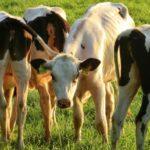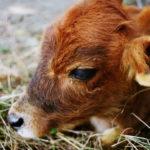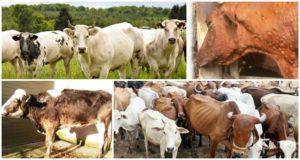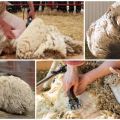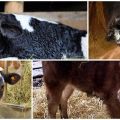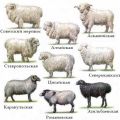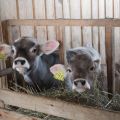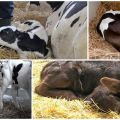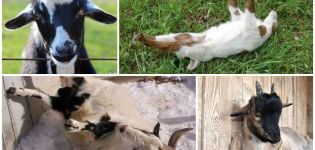Why a calf can lose hair and methods of treatment, prevention
Change of hair in animals is a normal phenomenon, in the common people called molt. In young cattle, hair loss and the growth of a new one occur in the spring and autumn seasons. It happens that cattle breeders ask veterinarians why a calf begins to lose hair in summer or winter, and shedding is accompanied by the appearance of hairless areas on the animal's body - the reasons can lie both in improper nutrition and care, and in serious pathologies.
Improper feeding
To maintain the health of cattle, the owners must provide the animals with a balanced diet containing the necessary set of vitamins and nutrients. It is imperative for young calves to get enough breast milk. But many herders pay more attention to feeding dairy cows, and calves get the leftover feed. In such cases, hair loss is the result of an unbalanced diet.
It is very important to include in the diet of young animals:
- fresh, juicy grass;
- tops;
- bone meal;
- fish meal;
- legumes and cereals;
- roots.
Hair loss due to improper nutrition is due to the calf's fragile intestines. He is not yet able to digest coarse food. If pastoralists feed young animals with expired, moldy, frost-bitten feed, normal digestive function is impaired. A large number of allergens accumulate in the intestines, due to which the calves lose some of their hair.
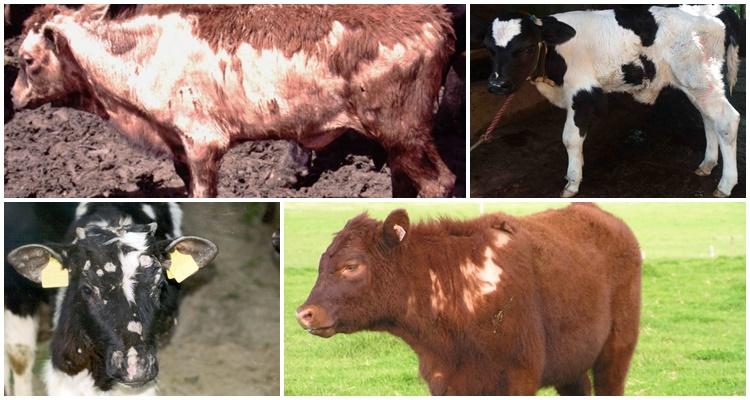
Fungi, parasites and hormonal disruptions
On the skin of cattle, fungi can parasitize, provoking the development of dermatomycosis - these are trichophytosis, microspores and other pathogens. When injected into the skin, calves develop itching and hair loss. Symptoms of a fungal infection in young animals:
- bald patches in the coat that form behind the ears; bald patches;
- the characteristic appearance of areas affected by the fungus - the wool looks as if it was specially cut with scissors;
- itching;
- restless calf behavior.
If treatment is not started on time, weeping erosions form at the site of the lesion, the skin becomes covered with a scaly crust.
In addition to hair loss, young animals are disturbed by parasites - lice, lice, ticks. Calves can pick them up in a cramped stall from an already infested livestock. Symptoms of parasite infestation are calf restlessness, itching, bald patches in the coat.In advanced cases, animals do not gain weight, become lethargic, and lag behind in physical development.
Hormonal disruptions are commonly seen in adult cows when mating phases are abnormal, but calves can also be disturbed. This occurs if cattle breeders give young animals feed containing hormones, with congenital diseases and severe stress.
Deprive and methods of its treatment
Trichophytosis (lichen) - occurs in adult cows and young animals. The disease has specific symptoms:
- on the head, neck, back, tail, around the eyes, wool will peel off, forming foci of baldness;
- with a superficial form of trichophytosis, an inflammatory process develops on the skin;
- exfoliation of the upper epithelial layer;
- inflammation of the deep skin layers, the formation of abscesses (in the follicular form).
Lichen can be transmitted from cattle to humans, so it is important to diagnose it on time and start treating it. Treatment scheme for trichophytosis in calves:
- vaccine "LTF-130" 10 milliliters for calves up to 4 months of age, 15 milliliters for young animals from 4 to 8 months (requires three injections with an interval of 10 days);
- "Griseofulvin" - the drug is added to concentrated feed at a dosage of 20 milligrams per kilogram of animal weight, the course of treatment is 14 days;
- ointments "Unisan", "Salicylic" (10%), "Yam" - for external treatment of areas affected by deprivation.

After lichen therapy, it is necessary to disinfect the barn, utensils and equipment, whitewash the walls. Juveniles with no symptoms should be vaccinated urgently.
Demodectic mange in calves
The causative agent of the disease is a tick of the genus Demodex, reaching a size of 0.2-0.3 mm. Ticks infect hair follicles, sweat and sebaceous glands of cattle, living in them in colonies of up to several thousand individuals. In 25-30 days, the larva turns into an adult (adult tick).
The lesions are located on the legs, back, chest, shoulder blades, neck and head. In these places, small tubercles are formed, with pressure on which a grayish exudate begins to stand out. There is no itching, bald spots may appear in the hairline around the clusters of tubercles. Treatment includes:
- "Ivermek" - a drug for intramuscular injection (0.2 grams per kilogram of calf weight);
- "Cycloferon", "Immunoparasitan" - immunostimulating drugs;
- emulsion "Dikresil" in 0.5% concentration - five times treatment every three days;
- chlorophos solution 1-2% - external treatment of the skin and wool every 3-4 days up to 6-7 times.
It is important to isolate sick calves from healthy livestock. For prevention and if there is a suspicion of infection, livestock are treated with acaricides.
Lice as one of the reasons
The source of lice is from infected cows and calves. The risk of head lice development increases in winter, especially if livestock are kept in cramped stalls where the necessary sanitary and hygienic conditions are not observed.
In winter, calves often experience a decrease in immunity, which is aggravated by an unbalanced diet and feeding young animals with poor-quality feed.
When infected with lice, the calves' skin becomes bald in the affected areas - parasites bite through the epidermis, damage the capillaries. On especially damaged areas, in places of greatest baldness, you can notice boils, nodules, hemorrhages and foci of eczema. The animal suffers from itching, eats poorly, becomes restless, loses weight. To get rid of lice in calves, alternative methods are preferred, since the use of insecticides can harm young animals:
- rubbing wood ash into the skin - at least two weeks;
- processing with kerosene or birch tar for 14 days;
- rinsing the scalp with a decoction against lice - it is necessary to steam the wormwood with a liter of boiling water, insist, add hellebore water from the pharmacy and tar soap.

You can use the drug in the form of an Ivermek aerosol - it eliminates parasites, accelerates the healing and restoration of damaged skin, eliminates itching and pain.
Stomach affection
Hair loss in calves can be caused by gastrointestinal diseases. The defeat of the digestive system is most often caused by an unbalanced diet and the use of poor-quality feed. If a cattle breeder gives the young animals overripe, expired or frozen feed, the livestock develops inflammatory processes of the stomach and intestines.
Moldy food causes fermentation in the digestive system. The intestines accumulate a mass of toxic substances and allergens. The balance of beneficial microflora is disturbed. As a result, the animal begins to lose hair, appears lethargy, weight is lost, and physical development slows down. The situation is aggravated in the spring and autumn seasons, when vitamin deficiency is observed in cattle.
Preventive measures
For the prevention of skin diseases and parasitosis leading to hair loss in young cattle, it is necessary to regularly examine the livestock and carry out routine vaccination. All sanitary and hygienic standards for keeping cows and calves in stalls should be strictly observed. Balanced nutrition of calves, strengthening of immunity, preventive treatment of hair with antiparasitic agents are important points.
Only experienced cattle breeders can distinguish a disease of the skin, stomach, vitamin deficiency in calves from the usual seasonal molting. If the calf suddenly began to go bald, lost its appetite, became lethargic and poorly gaining weight, it is necessary to urgently call a veterinarian for diagnosis and treatment. When the young animals retain their appetite, the animals behave actively and do not show signs of disease, but lose more hair than usual, it is worth taking a course of vitamin therapy to prevent systemic pathologies.

